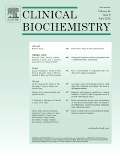Baby wash products linked to false positive screening results for marijuana exposure in the womb

(Medical Xpress) -- Accuracy of routine urine drug testing of newborns to identify exposure in the womb to marijuana may be interfered with by chemicals in commonly used baby soap and wash products, including those widely used by hospital nurseries.
This conclusion was arrived at by a multidisciplinary team of laboratory scientists, physicians, a social worker and nurses at the University of North Carolina School of Medicine and UNC Hospitals, whose nifty sleuthing revealed the culprit behind an unexpected spike in “false positive” cannabis exposure screening results. The test indicated yes, when the answer should have been no.
The study, led by Catherine A. Hammett-Stabler, PhD, professor of pathology and laboratory medicine and executive director of the Core Laboratory of the William W. McLendon Clinical Laboratories at UNC Hospitals, appears in the June issue of Clinical Biochemistry. She and her UNC coauthors state that accurate identification of illicit drug exposure in newborns “is critical to ensure both protection of the child and support for the family.”
A key factor that helped initiate the study was a revised screening protocol set in place in February 2011 that increased the use at UNC Hospitals of the urine immunoassay for identifying tetrahydrocannabinol-delta 9-carboxylic acid (THC) in newborns. THC is a metabolite of the psychoactive chemical found in the marijuana plant. The revised screening protocol was designed to fall in line behind the latest recommendations for newborn drug screening.
According to Hammett-Stabler, the clinical labs received a call in July 2011 from nurses in the Newborn Nursery asking questions about an increase in THC screens testing positive. Moreover, samples of meconium (the baby’s first bowel movement) were not testing positive as were the urine samples from the same infants. A review of testing from this unit since the previous January showed that 22 of the 120 urine drug screens performed were positive for THC, but none had undergone confirmation testing.
After a review of the mothers’ and newborns’ drug histories did not reveal any potential agents that could alter the screening test, a number of newer samples that had tested positive to THC screening were sent to a reference lab for confirmation with more sophisticated techniques, such as mass spectrometry. “The results did not match up with the original screens; they were not confirmed,” Hammett-Stabler said. “This led to a meeting with the nurses and other key clinical staff to talk through how the samples were collected and what happens between baby delivery and the collection of urine samples.”
The discussions revealed “considerable variation” between nursing staff in how newborns were cleansed before urine samples were collected, and in how the samples were collected: Some poked cotton balls or gauze within the disposable diapers, others used collection devices, while others turned diapers inside-out.
“So I asked, ‘What are you putting on the babies’ skin?’ because something was getting into the samples and interfering with the screening method,” Hammett-Stabler said. This led to an examination of all nursery-specific products that could potentially come in contact with urine samples and interfere with screening results: cotton balls, collection containers, possible dyes present in the outer portion of the diapers. The team then zeroed in on the baby wash.
Members of Hammett-Stabler’s lab “went to the drugstore and bought every example of baby wash on the shelves. We acquired some of the chemicals used to make up the baby washes including all that were in the products that gave the positive response,” she said.
“We identified some of the chemicals, some of the detergents that were doing this, but exactly how that happens, what the mechanism might be, we don’t know. Structurally, these things don’t look like marijuana metabolites, but clearly they are being recognized by the antibodies used in the immunoassay. ”And when testing those reagents in increasing concentrations we did see a positive response, albeit really low, just over the point of positive.”
“Our findings in this study drive home the point that confirmation by more sophisticated methods such as mass spectrometry should be considered before moving ahead with interventions such as child social services or child abuse allegations, which may be false, “ said co-author Carl J. Seashore, MD, associate professor of pediatrics at UNC and director of the Newborn Nursery.
“We wrote this paper to inform care providers and laboratory medicine people in hospitals that this issue is out there and that positive urine screens for THC need to be confirmed.”
















